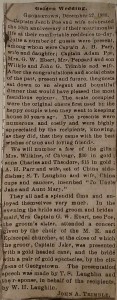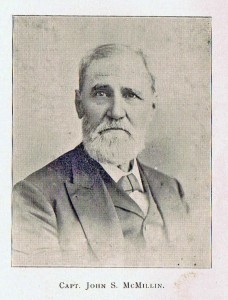One can get a bit carried away singing the praises of Pittsburgh. Or can one?
Several years ago, the question, “Where was the Civil War won?” was posed on a history site. The usual answers were submitted with much documentary support. I thought about the question for a few days then settled on my answer – Pittsburgh, PA. The administrator of the blog wrote that it was the “damnedest” thing he had ever read, but he would seriously think about it.
This is right and it is wrong.
Another wrong-footed praise of Pittsburgh follows.
History books inform us that the Civil War started in April 1861 in Charleston, SC with the bombardment of Ft Sumter in Charleston Bay. This event provoked the war between the states, but the shots fired there were not the first.
Earlier in Dec 1860, SC was the first state to secede from the union. Others followed. Sec of War, John B Floyd, a southern sympathizer, sent an order to the Allegheny Arsenal in Pittsburgh to ship 124 canons to New Orleans. The steamers Silver Wave and Marengo were contracted to transport the canons south. When citizens of Pittsburgh learned of this action, they protested knowing that the guns would be used to fortify the south. The commander of the arsenal, John Symington, attempted to obey the order from Washington. On Christmas Eve, angry crowds halted the movement of the canons and their military escorts to the Monongahela wharf. Thirty-eight guns were loaded on the Silver Wave before the crowds blocked the movement and the order was countermanded. Pittsburgh citizens threatened to blow the Silver Wave out of the water if it attempted to go down the Ohio River with the thirty-eight guns.
Southern politicians were outraged that Pittsburgh citizens threatened to interfere with military orders for the distribution of federal artillery and munitions.
In 1862, the Silver Wave was one of six packets contracted to transport the first Pittsburgh enlisted troops to Louisville, Ky. In 1863, the Silver Wave was the first noncombat steamer to successfully pass the Vicksburg batteries. That was a very big deal. An astounding resume for any steamboat captain.
The Silver Wave was a packet owned and operated by Capt John Smith McMillin. Born in Georgetown, PA in 1817, Capt John S McMillin moved to Grandview Ave on Mt Washington in Pittsburgh in 1853. In my heart, Capt John Smith McMillin will always be a Georgetown man.
It can also be argued that the Pittsburgh citizens protest was the first act of war between the North and South.
Copyright © 2017 Francis W Nash
All Rights Reserved
No part of this website may be reproduced without permission in writing from the author.

